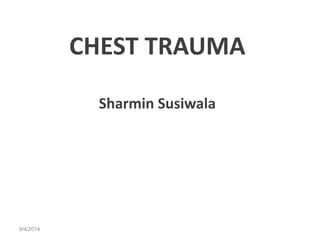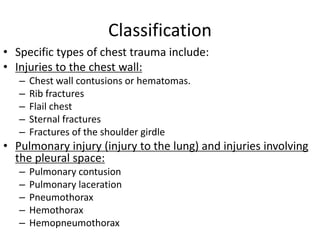Chest trauma can cause serious injury and is a common cause of disability and mortality after head and spinal cord injuries. Mechanisms of injury include blunt trauma, crush injuries, penetrating wounds, burns, and inhalation of foreign objects. Specific injuries include rib fractures, lung injuries, pneumothoraces, hemothoraces, aortic ruptures, and diaphragm injuries. Diagnosis involves history, physical exam noting diminished breath sounds and tracheal deviation, chest X-ray to detect fractures and lung abnormalities, and CT scan which aids in precise diagnosis of injuries.









